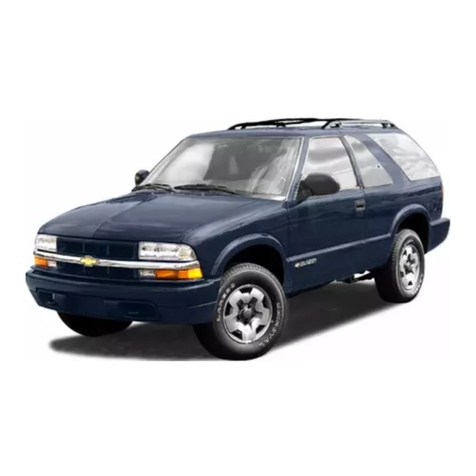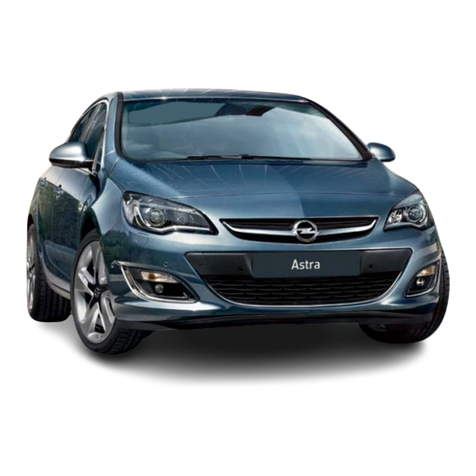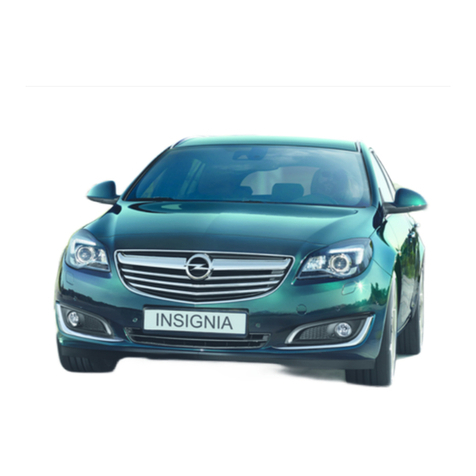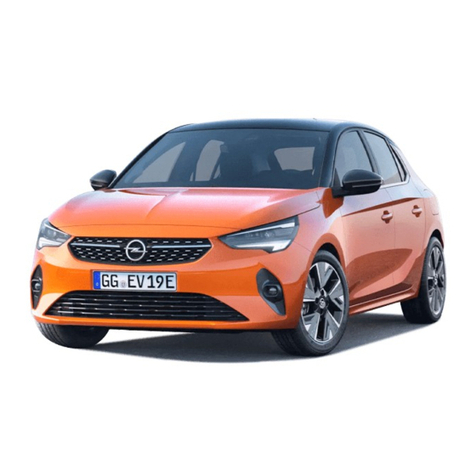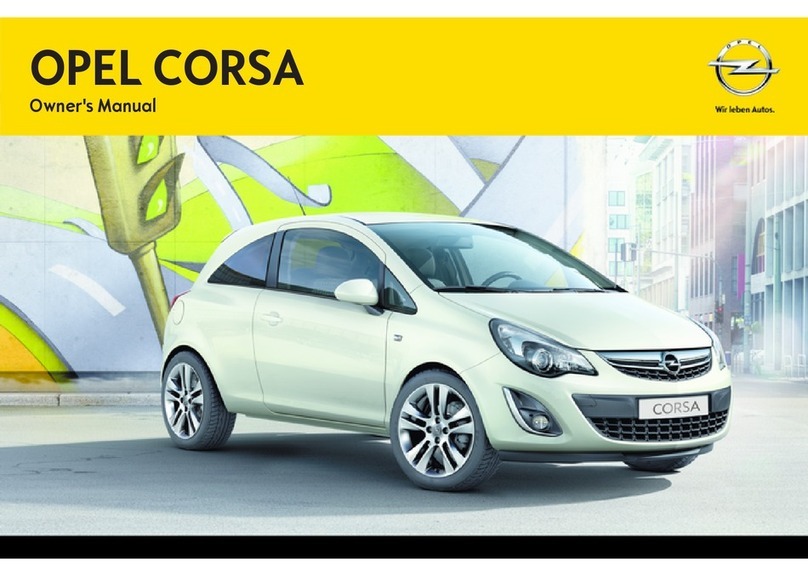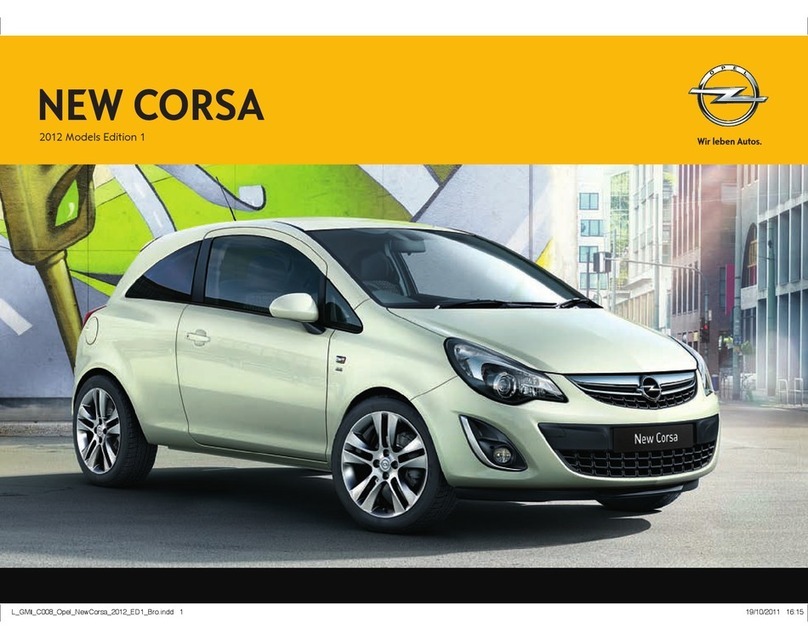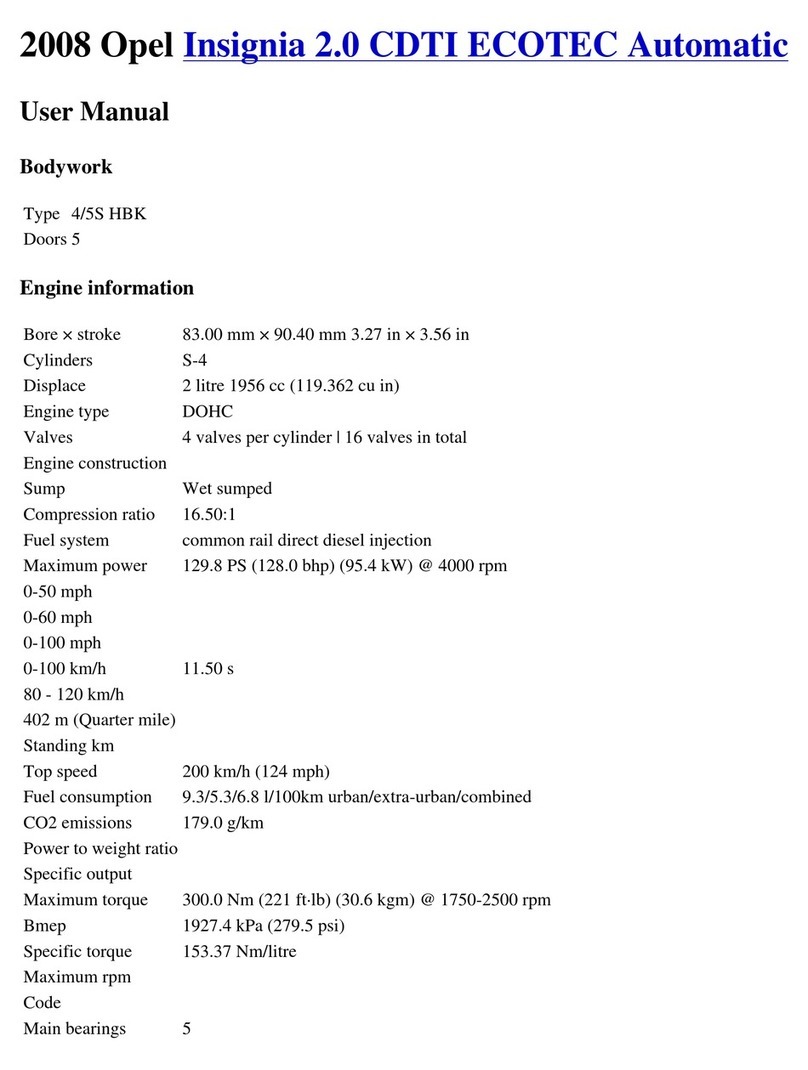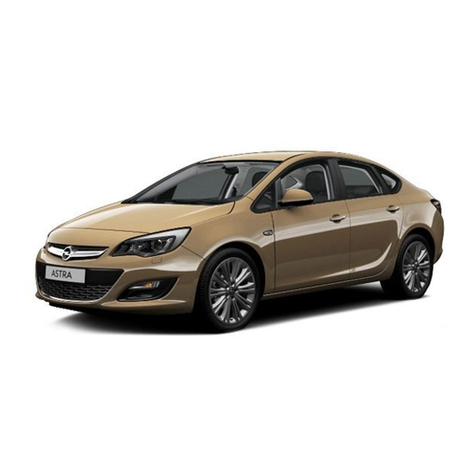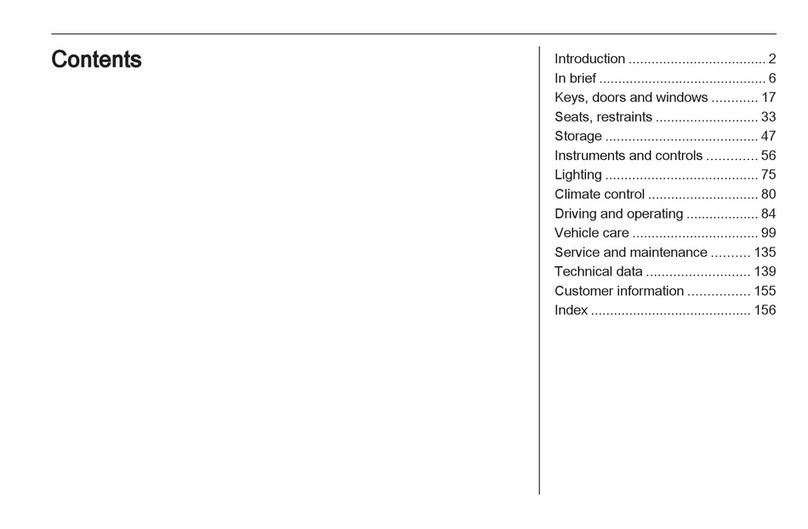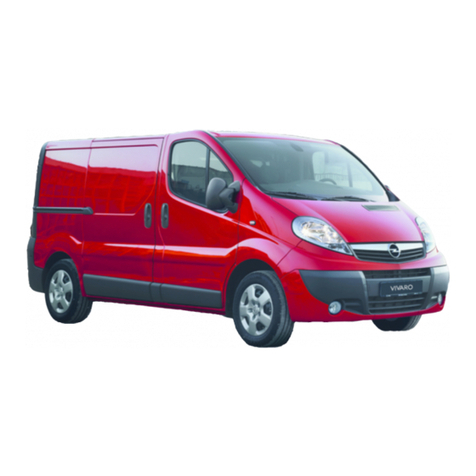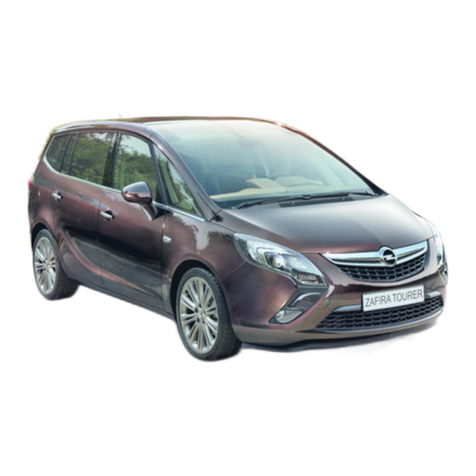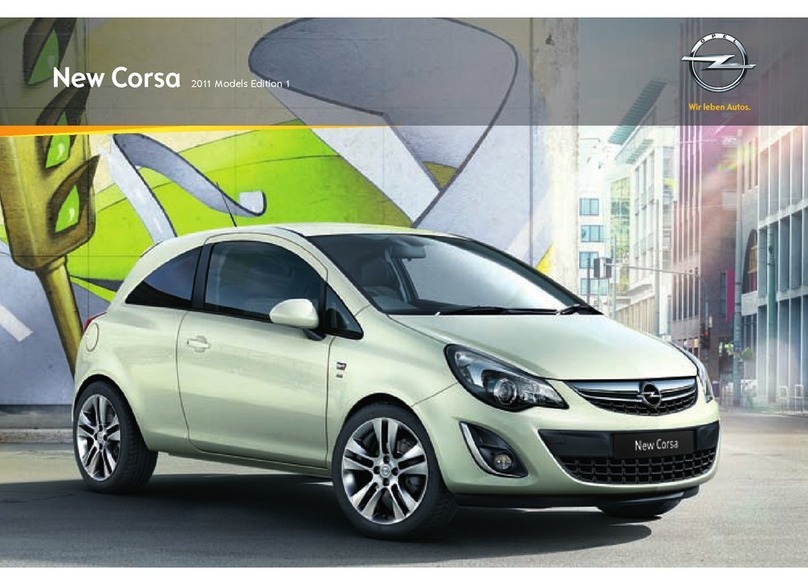Introduction 3
Vehicle specific data
Please enter your vehicle's data on
the previous page to keep it easily
accessible. This information is
available in the sections "Service and
maintenance" and "Technical data"
as well as on the identification plate.
Introduction
Your vehicle is a designed
combination of advanced technology,
safety, environmental friendliness
and economy.
This Owner's Manual provides you
with all the necessary information to
enable you to drive your vehicle
safely and efficiently.
Make sure your passengers are
aware of the possible risk of accident
and injury which may result from
improper use of the vehicle.
You must always comply with the
specific laws and regulations of the
country that you are in. These laws
may differ from the information in this
Owner's Manual.
When this Owner's Manual refers to
a workshop visit, we recommend your
Opel Service Partner.
All Opel Service Partners provide
first-class service at reasonable
prices. Experienced mechanics
trained by Opel work according to
specific Opel instructions.
The customer literature pack should
always be kept ready to hand in the
vehicle.
Using this manual
■ The "In brief" section will give you
an initial overview.
■ The table of contents at the
beginning of this manual and within
each chapter shows where the
information is located.
■ The index will enable you to search
for specific information.
■ This Owner's Manual depicts left-
hand drive vehicles. Operation is
similar for right-hand drive vehicles.
■ The Owner's Manual uses the
factory engine designations. The
corresponding sales designations
can be found in the chapter
"Technical data".
■ Directional data, e.g. left or right, or
front or back, always relate to the
direction of travel.
■ Depending on the model variant,
country variant, integrated special
equipment and accessories, the
scope of equipment in your vehicle
can differ from the items mentioned
in this Owner's Manual.
■ Display messages and interior
labelling are written in bold letters.
Danger, Warnings and
Cautions
9Danger
Text marked 9 Danger provides
information on risk of fatal injury.
Disregarding this information may
endanger life.

